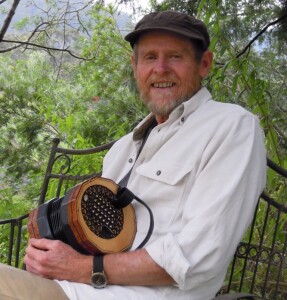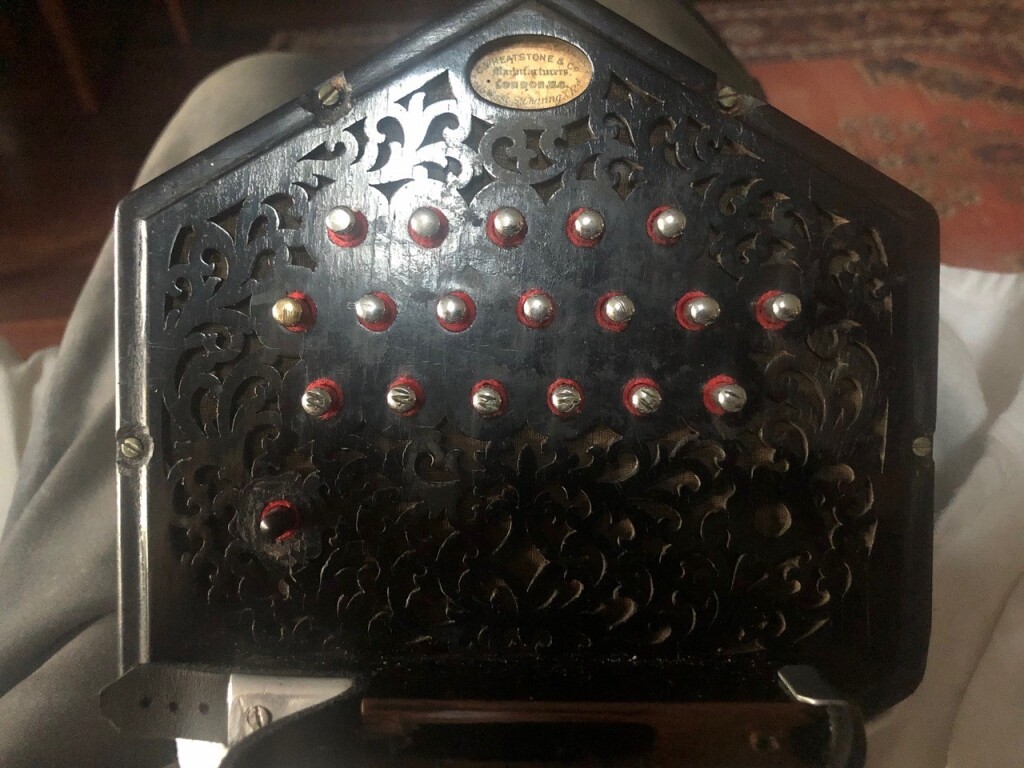Keeping connected during isolation
The members of the Concertina Convergence, the Australian mail list for concertina players, have devised a series of video concerts that they have dubbed ‘Homebaked Concertina Australia 2020’. The idea evolved when one of our concertina fraternity suggested that a YouTube concert featuring Australian concertina players would be a good record of some of what is happening in our part of the world today. One of the coordinators, Steve Wilson (who coordinated Homebaked with Pete McMahon), commented:
I saw it as an alternative to the Concertina Showcase Concert that was to have been held at the National Folk Festival but was of course cancelled.

Steve put out an invitation to all players on our concertina contacts email list; about 180 players in all. There were about thirty-five replies, too many for a single concert. Steve also invited Pete McMahon to do the production as he had done a wonderful job of recording, on video and photo, our mini Concertina Convergence event at Yackandandah eighteen months earlier.
There will be a series of six concerts of about fifteen minutes each running throughout July. The “Homebaked” title was conceived by Steve in recognition that many people had resorted to home baking as a way of coping with isolation. But, thankfully, a few people had concertinas to play.
The plan is for the concerts to be released on Google Business. Details will be announced on concertina.net and archived on Concertina Australia YouTube channel.
Concert Release dates:-
Concert 1 … 4th July…….introduced by Steve Wilson
Concert 2 … 11th July … introduced by Sue McMahon
Concert 3 … 18th July … introduced By Sarah Wade
Concert 4 … 25th July … introduced by Kate Burke
Concert 5 … 1st August … introduced by Warren Fahey
Concert 6 … 8th August … introduced by Pete McMahon
The names of all those performing will be displayed in the videos. There is a wonderful cross section of styles and abilities, from Australia’s best to some who are just starting.
The url for the Concertina Australia youtube channel is https://www.youtube.com/channel/UCQXKpNeXGqx6fGZEd63hFjg/videos, Nothing will go public until 4th July, then one a week for six weeks.
A Deep Swag of Australian Bush Songs
Your correspondent has kept busy during the COVID19 isolation since 8th April by videoing an Australian song a day. The songs are accompanied on English concertina and include songs about bushrangers, gold fever, shearers, drovers, dogs, ballads, convicts, etc. The songs were posted to this Facebook page: https://www.facebook.com/warren.fahey.10
and also to this website:
http://www.warrenfahey.com.au/videos-warren-fahey/.
Many of the songs are from my 1970s collecting work; the originals are in the archives of the National Library of Australia.
The following video is typical of the material and my style of concertina playing: https://www.youtube.com/watch?v=_AYY6JPtA3A.
I am very much a relaxed player who uses an Edeophone for song accompaniment. I do play a few dance tunes, but, as a cultural historian who uses songs as historical signposts, the stories in my songs are integral to the performance.
A mystery concertina
Australian concertina restorer George Bollinger has come forth with a curio: “I have just finished restoring this [Wheatstone] Anglo for a client. According to the Wheatstone ledgers it was made in 1911 and has 37 buttons, is oversized (at 6.5” across flats), and has “Class C” reeds. Instrument No 25320. There are no ledger notes to say it was commissioned or had any unusual features.”

The interesting thing about this is that the buttons are not arranged in the usual curved rows, but instead are in parallel straight rows. Two of Australia’s concertina makers, Richard Evans and Chris Ghent, have had a go at playing it and found that the button arrangement doesn’t affect the way that it is played at all. Chris advised that “Class C” reeds were the highest quality reeds made by Wheatstone, and this is quite apparent from its performance. It was originally tuned to Ab/Eb, but George retuned it to G/D, as this is of greater use to modern players.